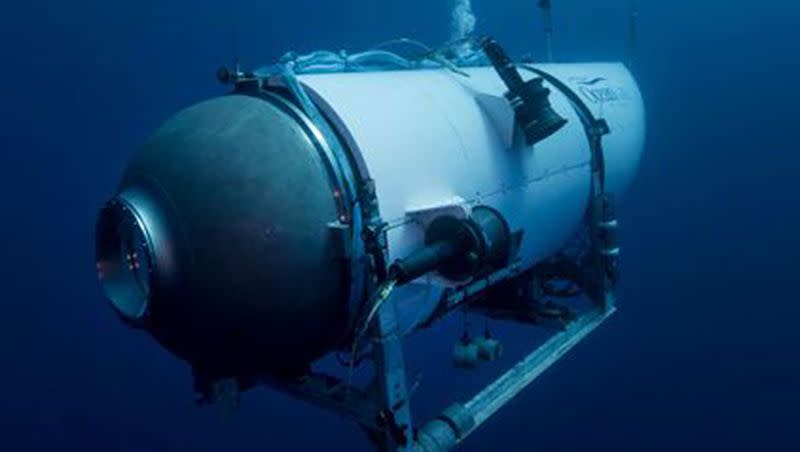Presumed human remains from the Titan submersible recovered, the Coast Guard says

The U.S. Coast Guard finished recovering the remaining Titan submersible debris and presumed human remains from the ocean floor.
According to a press release issued Tuesday by the Coast Guard, the recovered debris was transported for cataloging and analysis, and the presumed human remains were handed over to U.S. medical professionals for analysis.
This summer, five passengers — Stockton Rush, CEO of OceanGate; Hamish Harding, a British aviator; Shahzada Dawood, a British Pakistani businessman; Suleman Dawood, son of Shahzada Dawood; and Paul-Henry Nargeolet, director of Underwater Research for E/M Group and RMS Titanic Inc. — went on board the Titan submersible to visit the Titanic wreckage.
Related
After the sub began its descent on Sunday, June 18, it lost contact with its mother ship, the Polar Prince, an hour and 45 minutes into its trip. The Coast Guard searched until Thursday, June 22, then announced it found debris “consistent with the catastrophic loss of the pressure chamber.” The five passengers were then presumed dead.
The collection of evidence, presumed remains and debris from the Titan sub implosion is part of an ongoing investigation into how the implosion occurred.
“The MBI (Coast Guard’s Marine Board of Investigation) will continue evidence analysis and witness interviews ahead of a public hearing regarding this tragedy,” the Coast Guard said.
The conclusion of the salvage mission comes on the heels of a recent movie announcement: “Salvaged.”
The Titan incident is slated to be chronicled in this film with E. Brian Dobbins as a producer and Justin MacGregor and Jonathan Keasey as co-writers.
What happened to the Titan sub?
The Titan sub was a research submersible (different than a submarine) that could hold up to five people. The sub would take passengers down to the floor of the Atlantic ocean to see the Titanic wreckage and had successful voyages before June 2023. Tickets would cost up to $250,000 per person, according to Insider.
The OceanGate sub had drawn controversy before the June 2023 dive. In 2018, a joint letter signed by over three dozen people in the sub craft industry warned “of possible ‘catastrophic’ problems with the submersible’s development,” per The New York Times.
After the sub began its initial descent on a Sunday in June, it lost contact with its mothership. Unlike submarines, which are autonomous, submersibles need to remain in contact with a mothership throughout the dive.
After the sub lost contact, a sprawling, multinational search began. The sub only had a 96-hour oxygen supply, according to The Associated Press.
The search area was twice the size of Connecticut and 21⁄2 miles down into the ocean. The U.S. Navy, Canadian Coast Guard, OceanGate Expeditions, a French team, a submariner from the British Royal Navy and Wood Holes Oceanographic Institution all joined the effort to find the Titan.
Then, on the fifth day of the search (a Thursday), the Coast Guard announced the sub was believed to have imploded.
Later, The Wall Street Journal reported the U.S. Navy believed it had heard the Titan’s implosion.
“A top secret military acoustic detection system designed to spot enemy submarines first heard what the U.S. Navy suspected was the Titan submersible implosion hours after the submersible began its voyage, officials involved in the search said,” according to The Wall Street Journal.
“The U.S. held off making public what noises it had detected because it wanted to ensure search-and-rescue operations continued and couldn’t say for sure it was an implosion,” per The Wall Street Journal.
The U.S Navy relayed that it had detected a possible implosion to the Coast Guard. “It looks that the Titan imploded on Sunday on its way down to the Titanic shortly after contact was lost at a depth of around 9,000 feet,” an unnamed person “with direct knowledge of the matter” told The Wall Street Journal.

